Künstlerhaus Bethanien
2025
![]()
2025

Green Growth
For her exhibition at Künstlerhaus Bethanien, marking the conclusion of her residency, Steinunn Önnudóttir is creating a site-specific installation that explores the fragile balance between decay and growth. She engages with the visual and material language of these processes, making visible the subtle, often overlooked dynamics that permeate urban space. At the core of the work is the tension between the unstoppable force of nature and humanity’s efforts to control it: roots breaking through asphalt, ivy winding through fences—symbols of a resilient nature that asserts itself despite urban constraints. Based on her intensive observations of Berlin, the artist examines the complex interplay between the city, nature, and capitalist environmental strategies, particularly in the context of so-called ‘green’ investments and their often ambivalent effects.
A massive, sprawling arch structure forms the centerpiece of the installation. Its scorchmarks evoke industrial production processes, while its form conjures romantic associations with an idealized natural landscape. But this illusion crumbles: a large, tree-like sculpture lies uprooted on the ground, symbolizing the tension between natural growth and human intervention. On the walls, algae growth appears to rise—a painterly extension of the practice, oscillating between control and chance. The windows are coated with a greenish film that distorts the view of the outside world, as if a veil has been placed over perception. Architectural elements of the space are deliberately integrated to challenge the boundaries between the interior and exterior. By using materials in various stages of decay, the artist makes the constant transition between growth and decomposition visible.
Steinunn Önnudóttir views the processes of growth and decay as metaphors for confronting the capitalist logic that exploits nature as a resource while simultaneously attempting to domesticate its uncontrollable aspects. Her work is grounded in a critical engagement with the concepts of ‘Green Growth’ and ‘Degrowth’—two opposing positions within the ecological sustainability debate. While ‘Green Growth’ drives economic expansion through technological innovation and supposedly sustainable production methods within a capitalist framework, ‘Degrowth’ advocates for a radical reduction in economic activities to preserve natural resources.
Through her work, Steinunn Önnudóttir investigates how the term ‘green’ is increasingly instrumentalized to conceal capitalist agendas. Yet beyond the political dimension, the installation remains a silent, powerful image of the inevitability of natural processes—the flow of time, the ephemeral, and the uncontrollable.
The installation becomes a stage where nature and artifice collide—a scene between idyll and disaster, utopia and decay. The elements in the space appear as relics from a past or future time, oscillating between construction and deconstruction, control and chaos. The artist opens a window to another world—a world where nature and time cannot be tamed but unfold in their own rhythm.
For her exhibition at Künstlerhaus Bethanien, marking the conclusion of her residency, Steinunn Önnudóttir is creating a site-specific installation that explores the fragile balance between decay and growth. She engages with the visual and material language of these processes, making visible the subtle, often overlooked dynamics that permeate urban space. At the core of the work is the tension between the unstoppable force of nature and humanity’s efforts to control it: roots breaking through asphalt, ivy winding through fences—symbols of a resilient nature that asserts itself despite urban constraints. Based on her intensive observations of Berlin, the artist examines the complex interplay between the city, nature, and capitalist environmental strategies, particularly in the context of so-called ‘green’ investments and their often ambivalent effects.
A massive, sprawling arch structure forms the centerpiece of the installation. Its scorchmarks evoke industrial production processes, while its form conjures romantic associations with an idealized natural landscape. But this illusion crumbles: a large, tree-like sculpture lies uprooted on the ground, symbolizing the tension between natural growth and human intervention. On the walls, algae growth appears to rise—a painterly extension of the practice, oscillating between control and chance. The windows are coated with a greenish film that distorts the view of the outside world, as if a veil has been placed over perception. Architectural elements of the space are deliberately integrated to challenge the boundaries between the interior and exterior. By using materials in various stages of decay, the artist makes the constant transition between growth and decomposition visible.
Steinunn Önnudóttir views the processes of growth and decay as metaphors for confronting the capitalist logic that exploits nature as a resource while simultaneously attempting to domesticate its uncontrollable aspects. Her work is grounded in a critical engagement with the concepts of ‘Green Growth’ and ‘Degrowth’—two opposing positions within the ecological sustainability debate. While ‘Green Growth’ drives economic expansion through technological innovation and supposedly sustainable production methods within a capitalist framework, ‘Degrowth’ advocates for a radical reduction in economic activities to preserve natural resources.
Through her work, Steinunn Önnudóttir investigates how the term ‘green’ is increasingly instrumentalized to conceal capitalist agendas. Yet beyond the political dimension, the installation remains a silent, powerful image of the inevitability of natural processes—the flow of time, the ephemeral, and the uncontrollable.
The installation becomes a stage where nature and artifice collide—a scene between idyll and disaster, utopia and decay. The elements in the space appear as relics from a past or future time, oscillating between construction and deconstruction, control and chaos. The artist opens a window to another world—a world where nature and time cannot be tamed but unfold in their own rhythm.
text by Antje Weitzel














photos: Joanna Wilk
Loch Mess at Lounge Corp. Grand Prix 2023
On a beautiful early autumn day in Reykjavík, twelve moving sculptures came together to compete for the Lounge Corp. Grand Prix ‘23.
On a beautiful early autumn day in Reykjavík, twelve moving sculptures came together to compete for the Lounge Corp. Grand Prix ‘23.

Loch Mess (aka Messy) is a beautiful bog body of goo.
Composed of an array of materials natural and toxic, she jiggled her jello and ruffled her feathered straws as she swiflty moved down the race course, captivating the audience’s gaze.
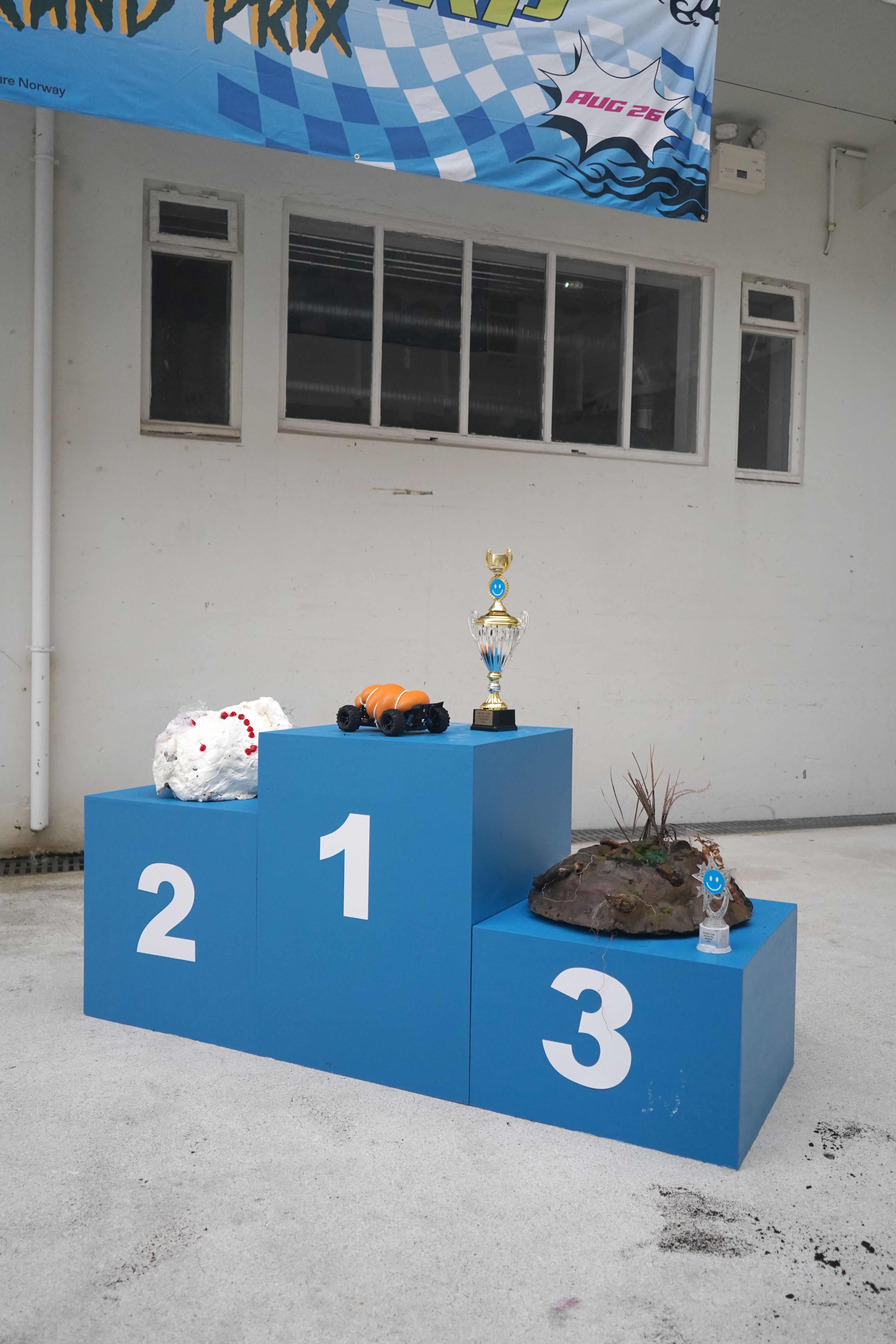 After an unfortunate incident where Messy went topsy-turvy due to her lax (and a little tipsy) operator, she had to settle for the 3rd place.
After an unfortunate incident where Messy went topsy-turvy due to her lax (and a little tipsy) operator, she had to settle for the 3rd place.However, Messy won the best price of all, the audience favourite, through a very fair and just, and also unsupervised, audience vote.
Messy is happy to have invited so many kids as her guests in the audience, because as we now know, kids have no shame :)

the competition

besties in show
with Guðlaug Mía Eyþórsdóttir & Hanna Dís Whitehead
Ásmundarsalur
2022
Ásmundarsalur
2022
In another house
‘In another house’ is a collaborative exhibition by Guðlaug Mía Eyþórsdóttir, Hanna Dís Whitehead & Steinunn Önnudóttir
The exhibition takes the shape of a home. The authors delineate personal quarters, external boundaries and internal spaces, but expose only limited areas. The authors’ works come together in these scenes and form an unusual material language in familiar settings. In the works of Hanna Dís, Guðlaug and Steinunn there are common themes. They all work in the intersection of art and design but in this project they meet on the borders of these worlds and present an exhibition which belongs to neither but instead intently defies such definitions.
‘In another house’ is a collaborative exhibition by Guðlaug Mía Eyþórsdóttir, Hanna Dís Whitehead & Steinunn Önnudóttir
The exhibition takes the shape of a home. The authors delineate personal quarters, external boundaries and internal spaces, but expose only limited areas. The authors’ works come together in these scenes and form an unusual material language in familiar settings. In the works of Hanna Dís, Guðlaug and Steinunn there are common themes. They all work in the intersection of art and design but in this project they meet on the borders of these worlds and present an exhibition which belongs to neither but instead intently defies such definitions.
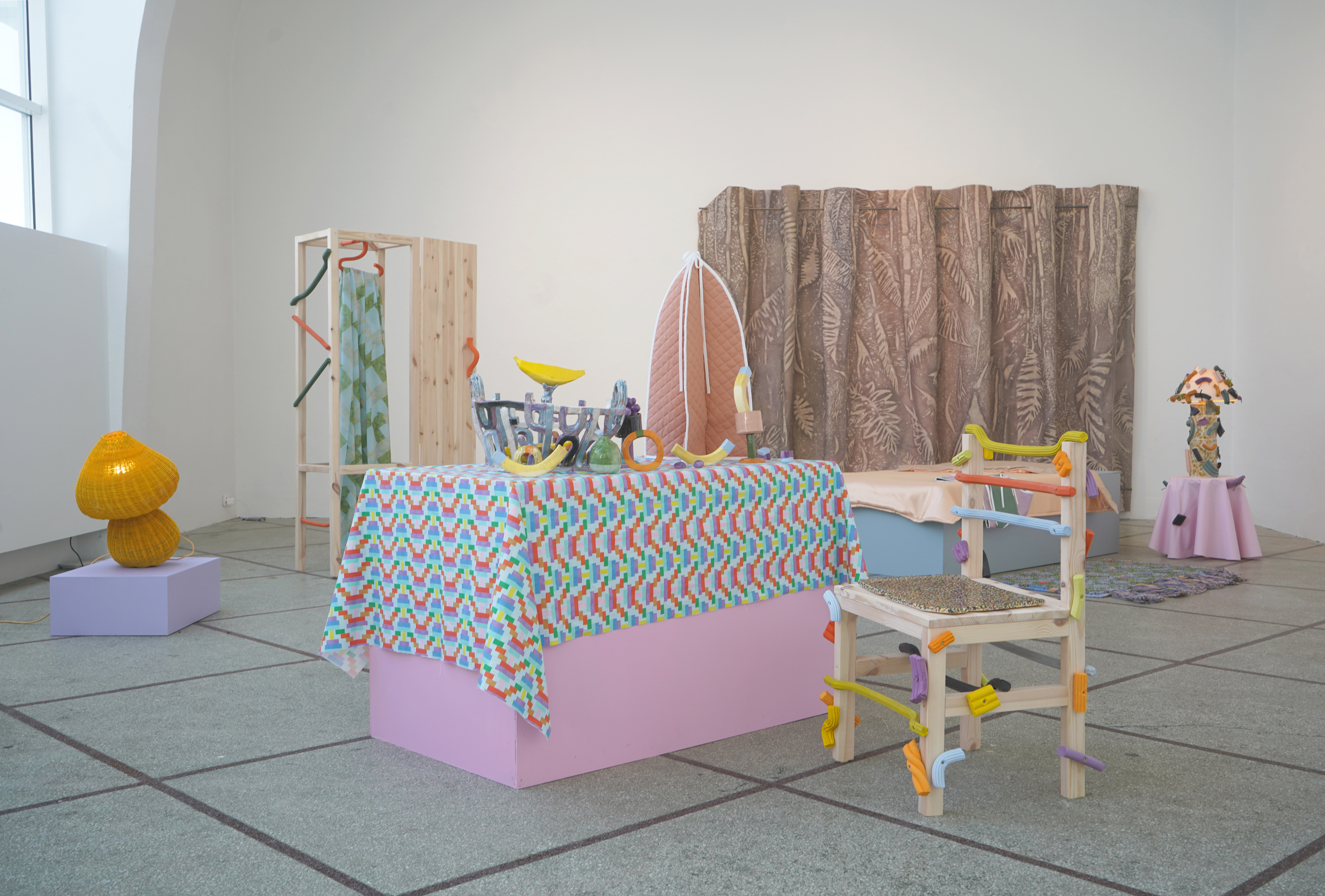


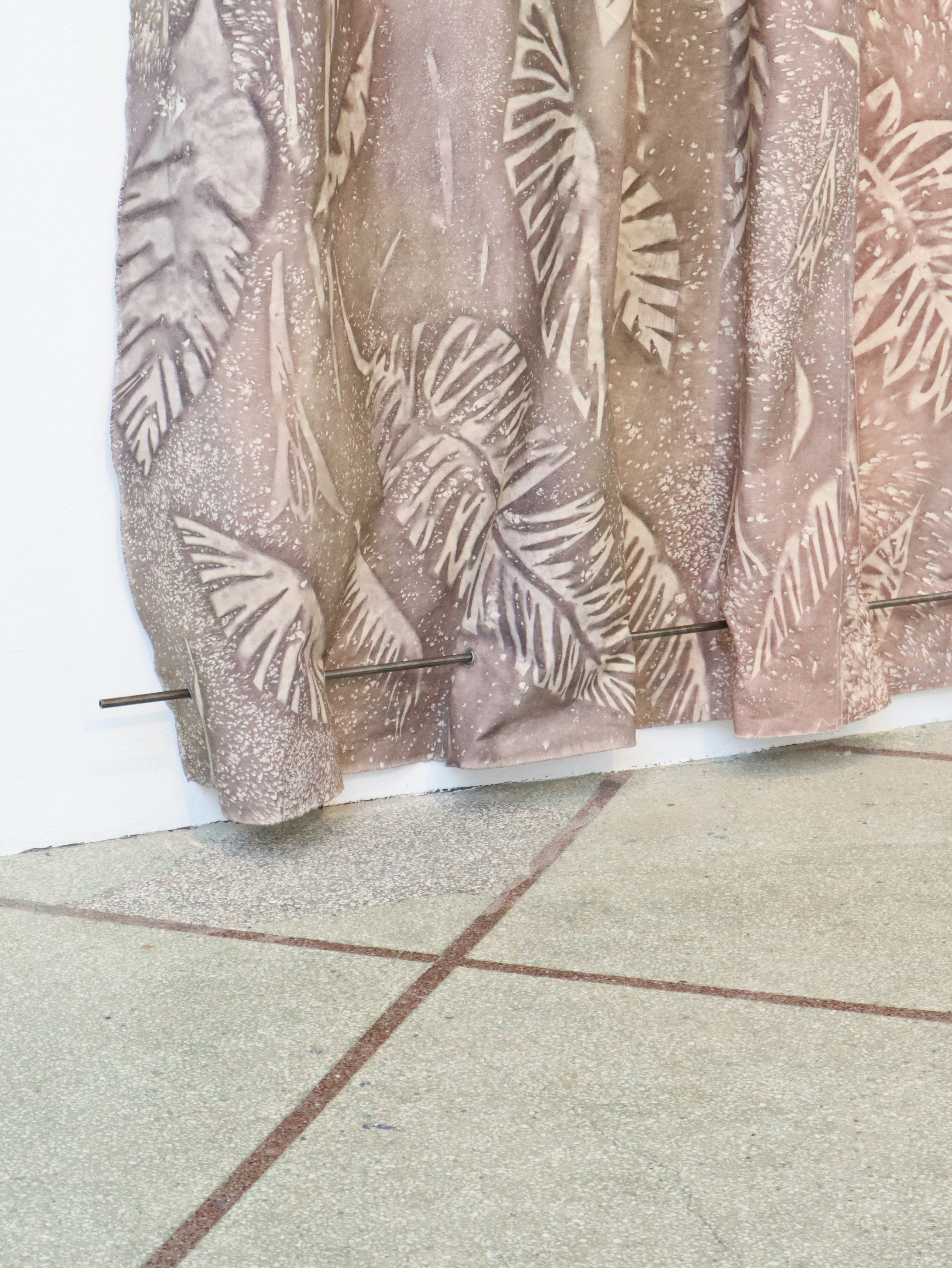


with Guðlaug Mía Eyþórsdóttir & Hanna Dís Whitehead
Ásmundarsalur
2022
Ásmundarsalur
2022
In another house
‘In another house’ is a collaborative exhibition by Guðlaug Mía Eyþórsdóttir, Hanna Dís Whitehead & Steinunn Önnudóttir
The exhibition takes the shape of a home. The authors delineate personal quarters, external boundaries and internal spaces, but expose only limited areas. The authors’ works come together in these scenes and form an unusual material language in familiar settings. In the works of Hanna Dís, Guðlaug and Steinunn there are common themes. They all work in the intersection of art and design but in this project they meet on the borders of these worlds and present an exhibition which belongs to neither but instead intently defies such definitions.
‘In another house’ is a collaborative exhibition by Guðlaug Mía Eyþórsdóttir, Hanna Dís Whitehead & Steinunn Önnudóttir
The exhibition takes the shape of a home. The authors delineate personal quarters, external boundaries and internal spaces, but expose only limited areas. The authors’ works come together in these scenes and form an unusual material language in familiar settings. In the works of Hanna Dís, Guðlaug and Steinunn there are common themes. They all work in the intersection of art and design but in this project they meet on the borders of these worlds and present an exhibition which belongs to neither but instead intently defies such definitions.




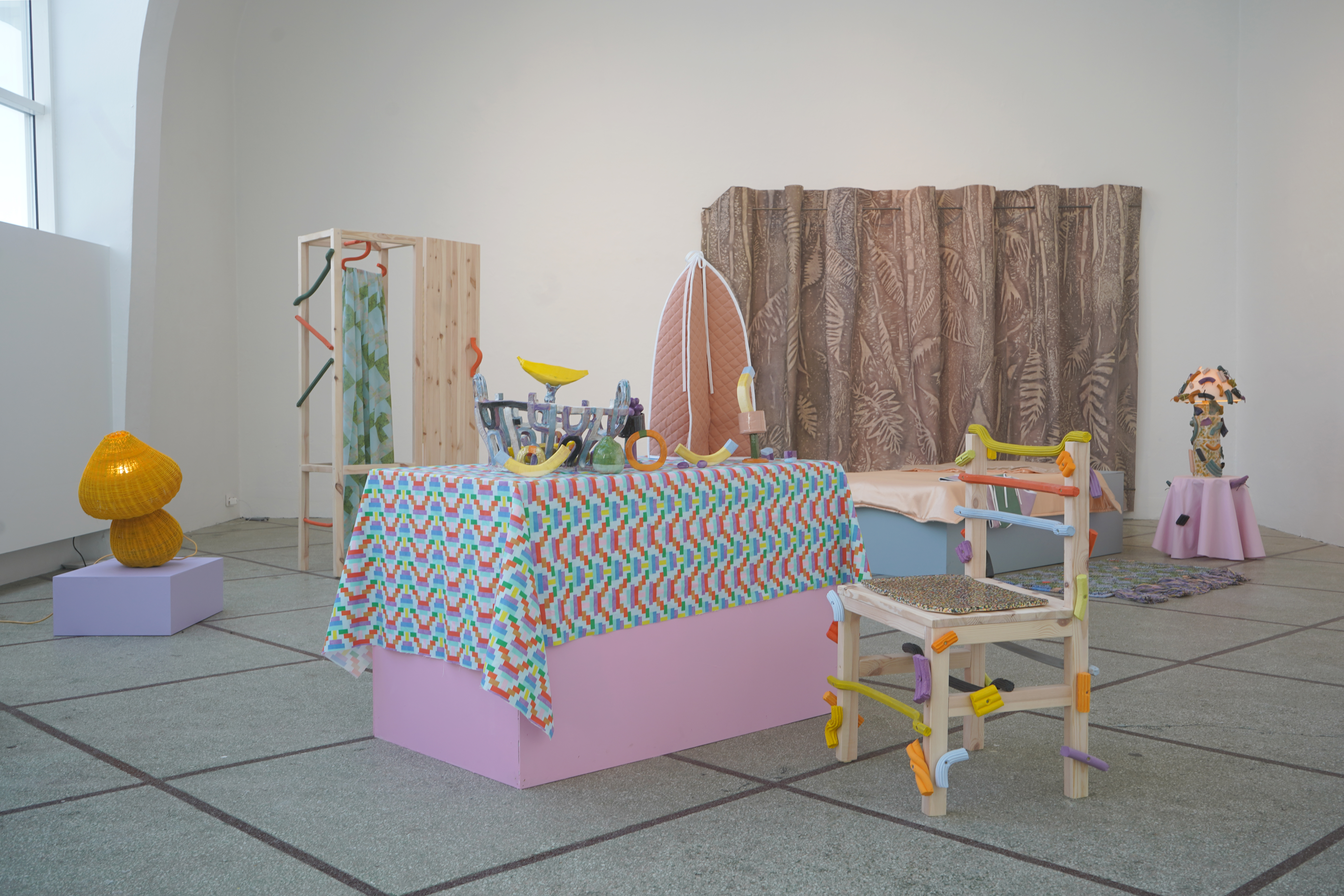

collaboration with Anna Hrund Másdóttir
and Ragnheiður Káradóttir
Kling & Bang Gallery, Marshall House
2021
and Ragnheiður Káradóttir
Kling & Bang Gallery, Marshall House
2021
feigðarós — dreamfields
feigðarós — dreamfields is a collaborative artwork, a show where the artists’ individual ideas and artistic palettes have blended and transformed as they got to know each other’s work and thought processes.
The installation is an immersive environment where viewers can walk around sculptures that render an otherworldly vista. It offers a journey of organic, simulated, abstract and invented textures in a landscape implying desolation while drawing up scenes both in miniature and monumental scale.
The artists received a nomination for the Icelandic Art Prize for the exhibition.
feigðarós — dreamfields is a collaborative artwork, a show where the artists’ individual ideas and artistic palettes have blended and transformed as they got to know each other’s work and thought processes.
The installation is an immersive environment where viewers can walk around sculptures that render an otherworldly vista. It offers a journey of organic, simulated, abstract and invented textures in a landscape implying desolation while drawing up scenes both in miniature and monumental scale.
The artists received a nomination for the Icelandic Art Prize for the exhibition.






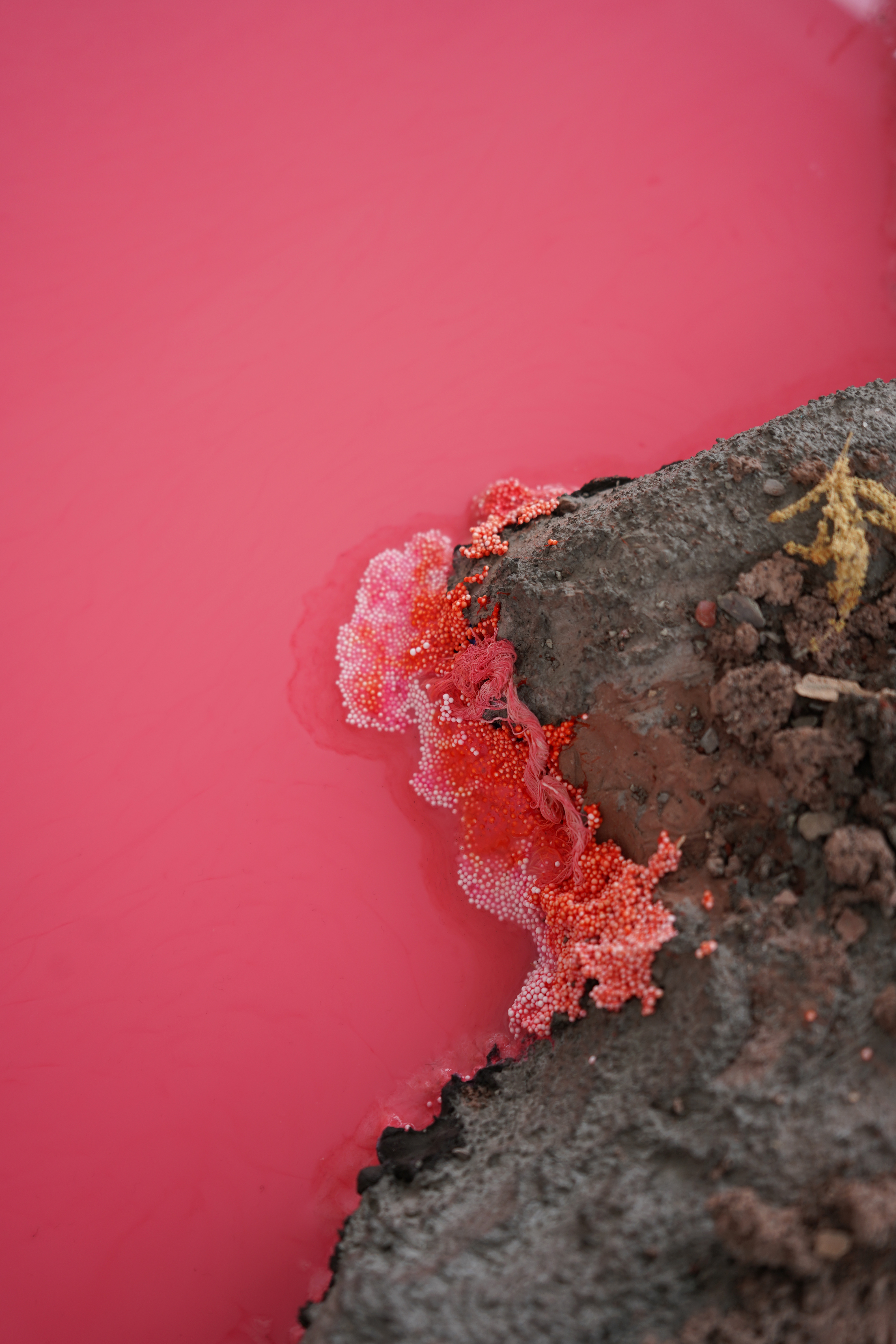





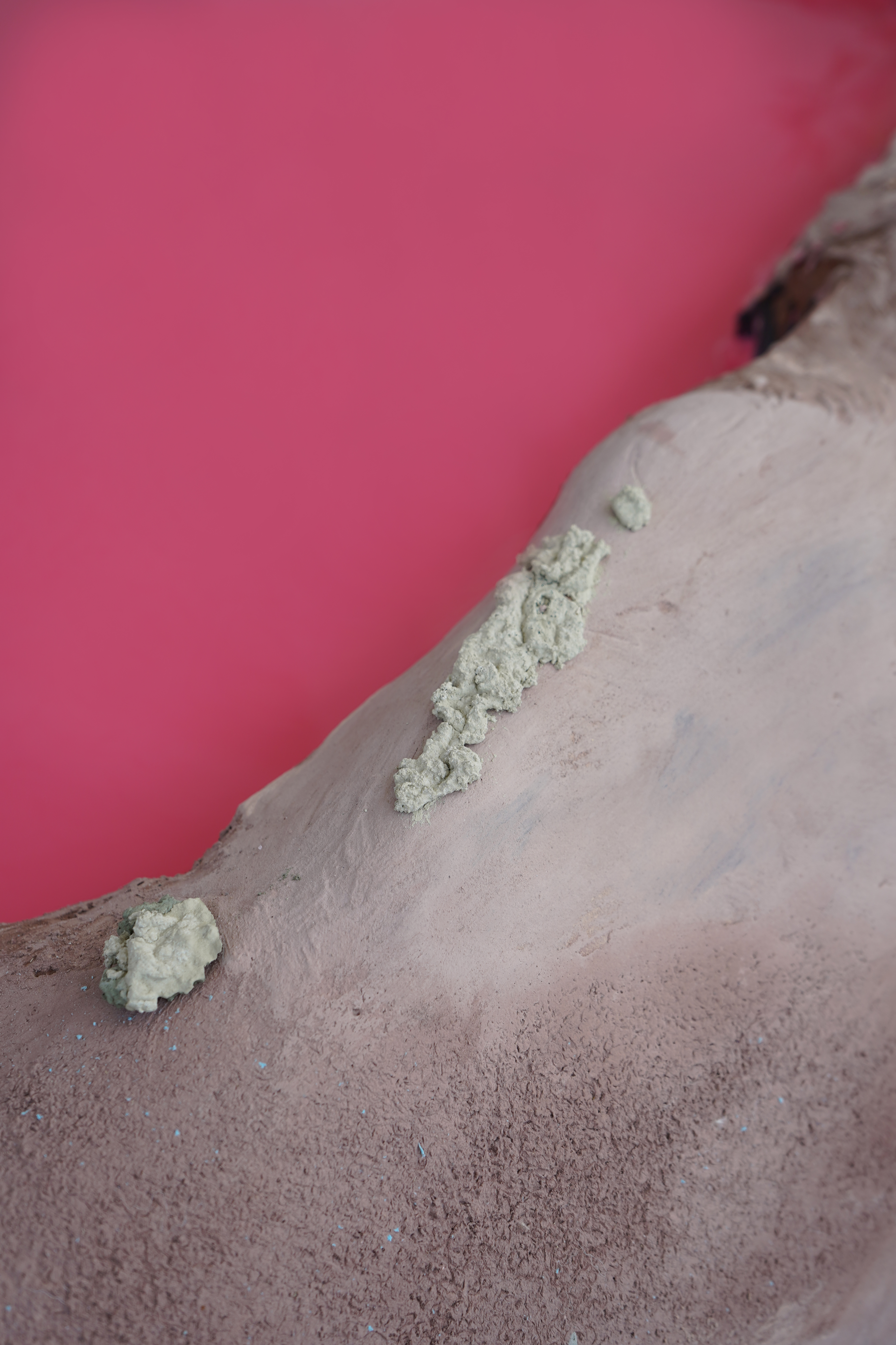


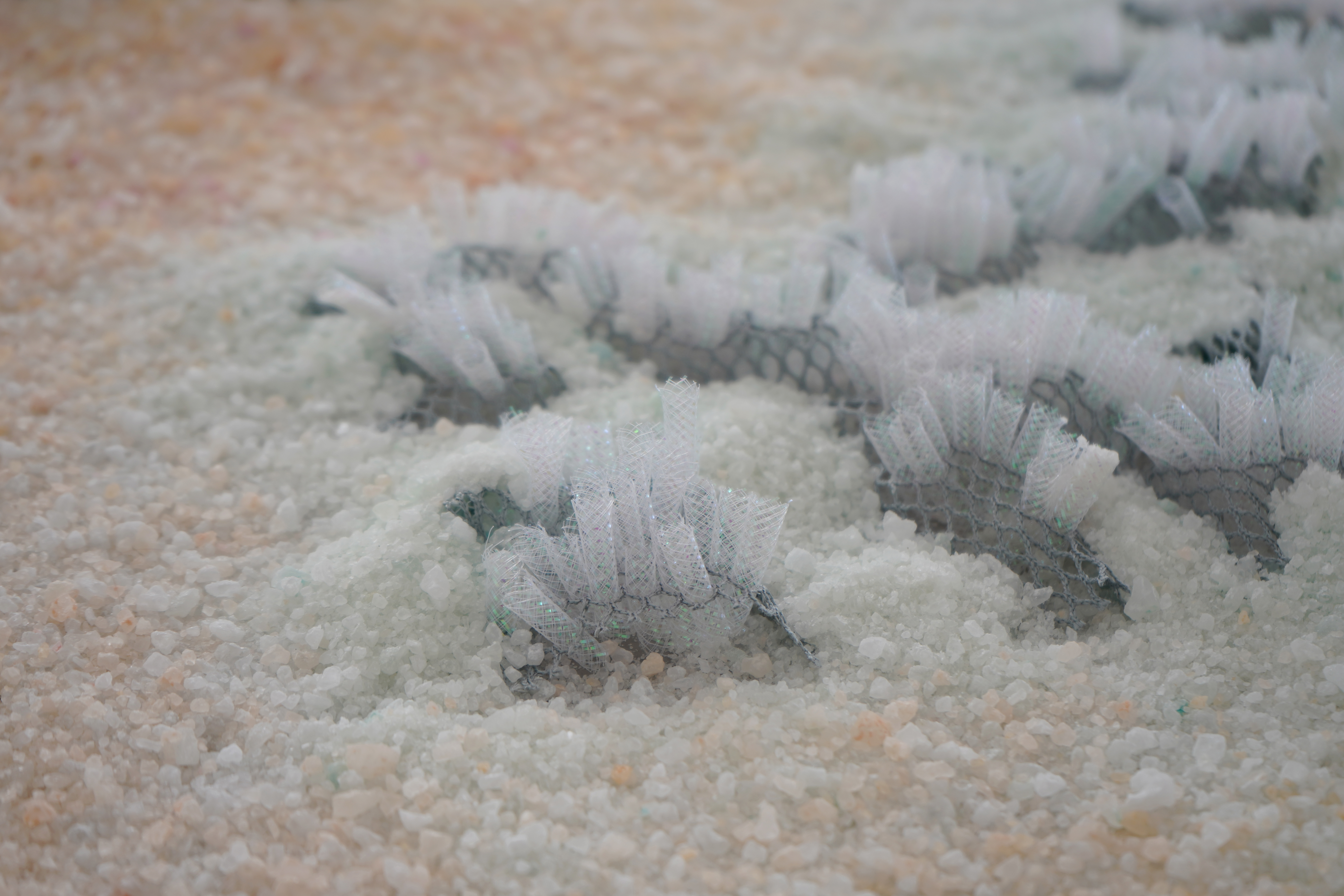



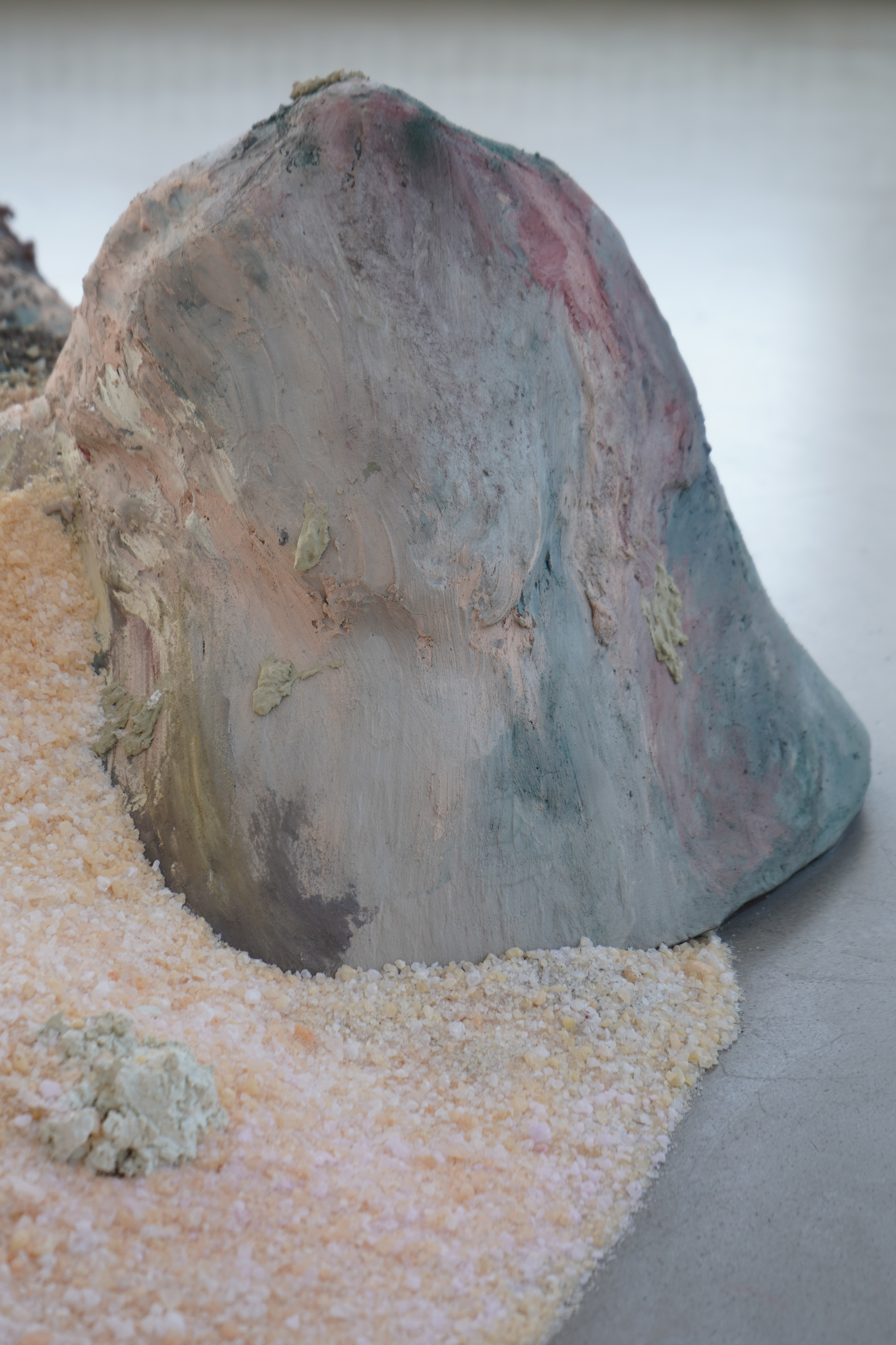


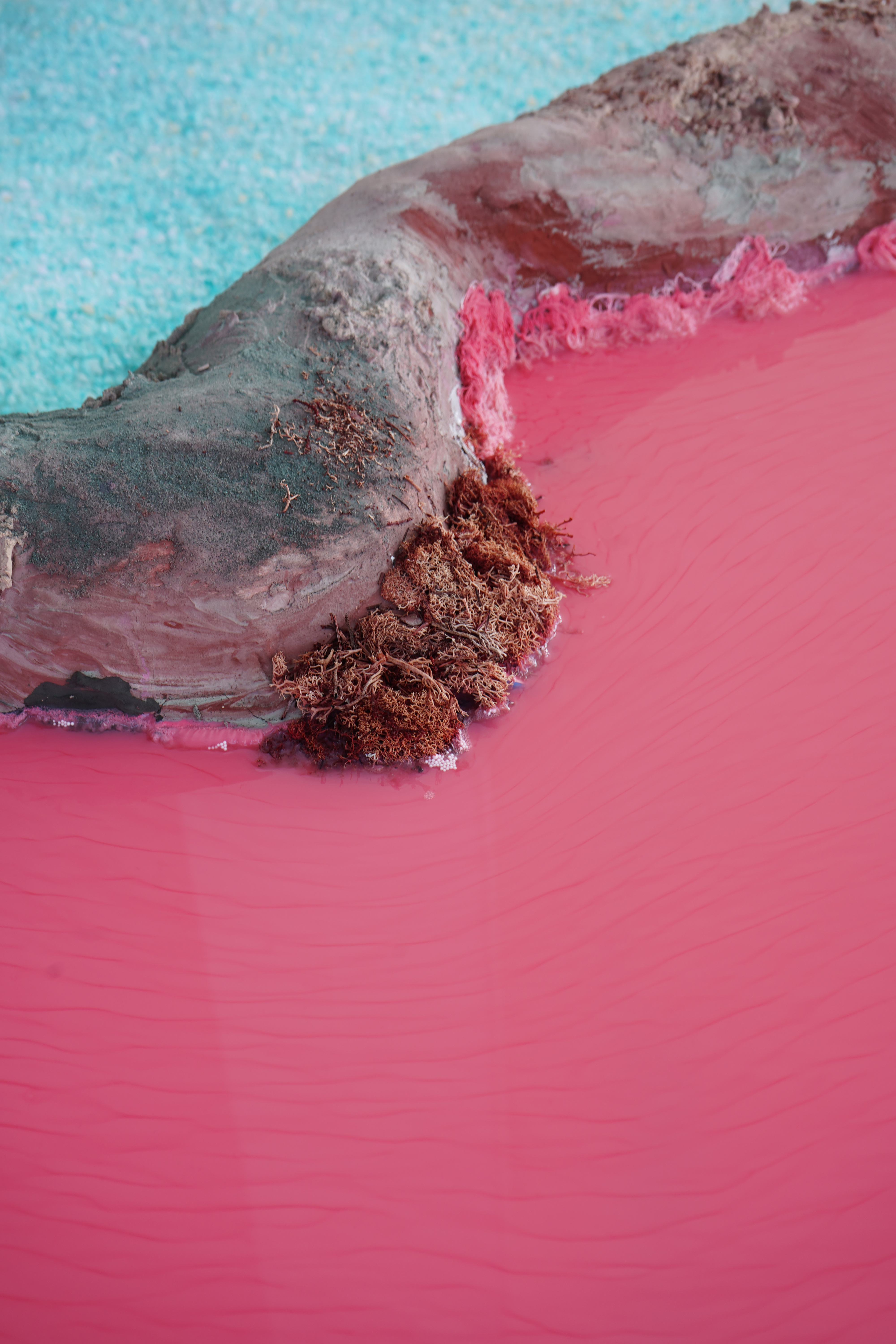

photos: Lilja Birgisdóttir & Steinunn Önnudóttir